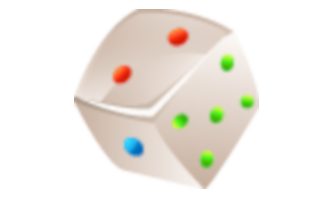Cell Processes
Science, Grade 6
Cell Processes
Study Guide

Cell Processes
Flash Cards

Cell Processes
Quiz

Cell Processes
Worksheets

Cell Processes
Games

Study Guide Cell Processes Science, Grade 6
❮
1
/
5
❯
CELL PROCESSES Chemical Compounds in a Cell An element is matter that cannot be broken down into a more simple substance. An element is made up of smaller units of an element called atoms. A compound is a combination of elements that are chemically combined together. A compound in its most basic form is called a molecule. There are two types of compounds called organic and inorganic compounds. Organic compounds contain the element carbon, from which most living organisms are made. Inorganic compounds do not contain the element carbon. Lesson Checkpoint: What is the main difference between organic and inorganic compounds? © Copyright NewPath Learning. All Rights Reserved. Permission is granted for the purchaser to print copies for non-commercial educational purposes only. Visit us at www.NewPathLearning.com.
Proteins Proteins are large organic compounds that are made of carbon, oxygen, hydrogen, nitrogen, and sometimes sulfur. Proteins are important for many cellular functions and are part of many of the structures that are found within the cell. A protein molecule is made up of smaller molecules that are called amino acids. Amino acids are the building blocks of proteins. There are a total of 20 different amino acids. They are similar to the letters in the alphabet, in that they can be put together in multiple ways to for a variety of proteins, just like letters can be put together to form words. For example, an enzyme is a type of protein that speeds up a chemical reaction within a living organism. Carbohydrates Carbohydrates are organic compounds that are packed with energy and made from the elements carbon, hydrogen, and oxygen. Lipids Lipids are also known as fats and are packed with more energy than carbohydrates. They are made from the elements carbon, hydrogen, and oxygen. Energy for the cell is produced from carbohydrates and lipids. © Copyright NewPath Learning. All Rights Reserved. Permission is granted for the purchaser to print copies for non-commercial educational purposes only. Visit us at www.NewPathLearning.com.
Nucleic Acids Nucleic acids are organic molecules that contain the instructions for all of the cell functions. They are made from carbon, hydrogen, oxygen, nitrogen, and phosphorus. There are two types of nucleic acids. DNA (Deoxyribonucleic acid), the genetic material of an organism, and RNA (ribonucleic acid), the important material in producing proteins within the cell. RNA is found in both the nucleus and the cytoplasm. DNA Water Water plays many roles within the cell. Water dissolves materials, starts chemical reactions, helps the cell maintain its size and shape, and keeps the temperature of the cell stable. © Copyright NewPath Learning. All Rights Reserved. Permission is granted for the purchaser to print copies for non-commercial educational purposes only. Visit us at www.NewPathLearning.com.
Important Cell Processes Diffusion Cells use diffusion in many processes. Diffusion is the moving of a substance from an area of higher concentration to an area of lower concentration. Molecules continuously move by bumping into other molecules. This bumping allows the molecules to spread out evenly. A living cell needs oxygen to survive. A single celled organism uses diffusion to obtain oxygen. Inside the cell there is a low concentration of oxygen, while outside the cell there is a high concentration of oxygen. The oxygen will diffuse into the cell because of the concentration difference and allow the organism to obtain oxygen. Osmosis Osmosis is the diffusion of water across the cell membrane. Cells need water to function properly. Osmosis allows for a continuous diffusion of water through the cell membrane to maintain the functions of the cell. Respiration Respiration is a process that cells use to get energy by breaking down food molecules and releasing the energy the food holds. During respiration, carbohydrates are broken down into molecules that are known as glucose. Glucose is a simple sugar that forms the basis of a carbohydrate molecule. Cells constantly need energy to function so this process of respiration is constant. Oxygen is needed to carry out respiration in the majority of living cells. © Copyright NewPath Learning. All Rights Reserved. Permission is granted for the purchaser to print copies for non-commercial educational purposes only. Visit us at www.NewPathLearning.com.
The chemical equation for respiration is as follows: There are two separate stages in respiration. • The first stage takes place in the cytoplasm and yields a small amount of energy. • The second stage takes place in the mitochondria and yields the majority of the energy. Fermentation Fermentation is a process of obtaining energy without using oxygen. Organisms that live in an environment that has little or no oxygen use this process to obtain energy. There are two types of fermentation: Lactic acid fermentation is sometimes used in humans when their muscle cells cannot take in enough oxygen to satisfy the task. For example, a runner might not be getting enough oxygen to muscles when running. This causes the muscle tissue to feel tired and sore. Alcoholic fermentation is used by yeast and other single celled organisms. One of the by-products of alcoholic fermentation is alcohol. © Copyright NewPath Learning. All Rights Reserved. Permission is granted for the purchaser to print copies for non-commercial educational purposes only. Visit us at www.NewPathLearning.com.
